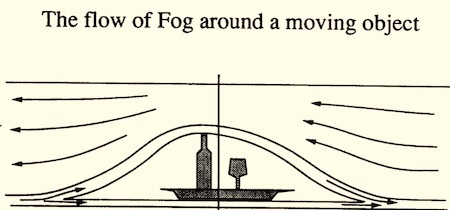The Utility Fog of J. Storm Hall
Utility fog has a father, who wrote a report:
“Utility Fog: A Universal Physical Substance,” J. Storm Hall, Interdisciplinary Science and Engineering in the Era of Cyberspace, NASA Conference publication 10129, 1993, pp. 115-126. Hall, at Rutgers University, explains:
Active, polymorphic material (“Utility Fog”) can be designed as a conglomeration of 100-micron robotic cells (‘foglets’). Such robots could be built with the techniques of molecular nanotechnology….
The Fog acts as a continuous bridge between actual physical reality and virtual reality. The Fog is universal effector as well as a universal sensor. Any (real) object in the Fog environment can be manipulated with an extremely wide array of patterns of pressure, force, and support; measured; analyzed; weighed; cut; reassembled; or reduced to bacteria-sized pieces and sorted for recycling.
General Properties and Uses—As well as forming an extension of the senses and muscles of individual people, the Fog can act as a generalized infrastructure for society at large. Fog City need have no permanent buildings of concrete, no roads of asphalt, no cars, trucks, or busses. It can look like a park, or a forest, or if the population is sufficiently whimsical, ancient Rome one day and Emerald City the next.
(Thanks to Anthony Brooks for bringing this to our attention.)

Marc Abrahams's Blog
- Marc Abrahams's profile
- 14 followers




